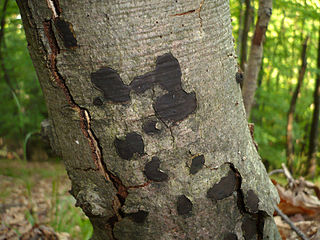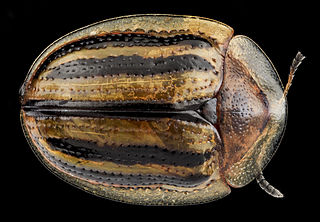Related Research Articles

In mathematics, convolution is a mathematical operation on two functions that produces a third function that expresses how the shape of one is modified by the other. The term convolution refers to both the result function and to the process of computing it. It is defined as the integral of the product of the two functions after one is reflected about the y-axis and shifted. The choice of which function is reflected and shifted before the integral does not change the integral result. The integral is evaluated for all values of shift, producing the convolution function.

In physics, engineering and mathematics, the Fourier transform (FT) is an integral transform that converts a function into a form that describes the frequencies present in the original function. The output of the transform is a complex-valued function of frequency. The term Fourier transform refers to both this complex-valued function and the mathematical operation. When a distinction needs to be made the Fourier transform is sometimes called the frequency domain representation of the original function. The Fourier transform is analogous to decomposing the sound of a musical chord into the intensities of its constituent pitches.

In thermodynamics, the Gibbs free energy is a thermodynamic potential that can be used to calculate the maximum amount of work, other than pressure-volume work, that may be performed by a thermodynamically closed system at constant temperature and pressure. It also provides a necessary condition for processes such as chemical reactions that may occur under these conditions. The Gibbs free energy is expressed as

Leafhopper is the common name for any species from the family Cicadellidae. These minute insects, colloquially known as hoppers, are plant feeders that suck plant sap from grass, shrubs, or trees. Their hind legs are modified for jumping, and are covered with hairs that facilitate the spreading of a secretion over their bodies that acts as a water repellent and carrier of pheromones. They undergo a partial metamorphosis, and have various host associations, varying from very generalized to very specific. Some species have a cosmopolitan distribution, or occur throughout the temperate and tropical regions. Some are pests or vectors of plant viruses and phytoplasmas. The family is distributed all over the world, and constitutes the second-largest hemipteran family, with at least 20,000 described species.

Taractrocera ceramas, commonly known as the Tamil grass dart, is a butterfly belonging to the family Hesperiidae. It is found from the Western Ghats to Mumbai, in the hills of southern India, in northeast India to northern Burma and in south-eastern China.

Moraea, the Cape tulips, is a genus of plants in the family Iridaceae, first described as a genus in 1758. The group is widespread across Africa, the Mediterranean, and central and southwestern Asia. The genus name is a tribute to the English botanist Robert More.
Aeolosia is a genus of moths in the subfamily Arctiinae.

Metaemene is a genus of moths of the family Erebidae. The genus was erected by George Hampson in 1910.

Lecanographa is a genus of about 40 species of lichens in the family Lecanographaceae. It was circumscribed in 1994 by José M. Egea and Pilar Torrente, with Lecanographa lyncea as the type species.

Biscogniauxia is a genus of fungi in the family Xylariaceae. Subtaxa include Biscogniauxia capnodes var. capnodes, Biscogniauxia marginata and Biscogniauxia nummularia, which are plant pathogens. The genus was circumscribed by Otto Kuntze in Revis. Gen. Pl. 2 on page 398 in 1891.
Tacparia is a genus of moths in the family Geometridae erected by Francis Walker in 1860.
Aeolosia aroa is a moth of the subfamily Arctiinae. It is found in New Guinea.
Aeolosia multipunctata is a moth of the subfamily Arctiinae. It is found in Burma.

Cercosporella is a fungus genus in the family Mycosphaerellaceae.

Oberea atropunctata is a species of flat-faced longhorn beetle in the tribe Saperdini in the genus Oberea, discovered by Pic in 1916.

Graphocephala atropunctata, commonly known as the blue-green sharpshooter, is a hemipteran bug endemic to California. It carries the phytopathogenic bacteria Xylella fastidiosa which infects the xylem of grape vines causing die-back – known as Pierce's disease. This leads to loss of productivity and economic damage to the California vineyards.

Agroiconota is a genus of tortoise beetles in the family Chrysomelidae. There are more than 20 described species in Agroiconota.
Tacparia atropunctata is a species of geometrid moth in the family Geometridae. It is found in North America.

Walterianella is a genus of flea beetles in the family Chrysomelidae. There are more than 40 described species in Walterianella. They are found in Central and South America.

Biscogniauxia atropunctata, the hypoxylon canker, is a species of sac fungus in the family Graphostromataceae. Like many other fungi in the genus, it is a plant pathogen; specifically this species can cause Biscogniauxia (Hypoxylon) canker and dieback disease in host trees.
References
- ↑ Beccaloni, G.; Scoble, M.; Kitching, I.; Simonsen, T.; Robinson, G.; Pitkin, B.; Hine, A.; Lyal, C., eds. (2003). "Aeolosia atropunctata". The Global Lepidoptera Names Index . Natural History Museum.